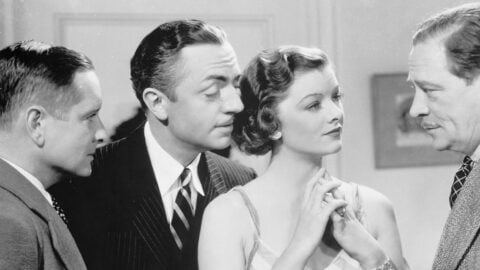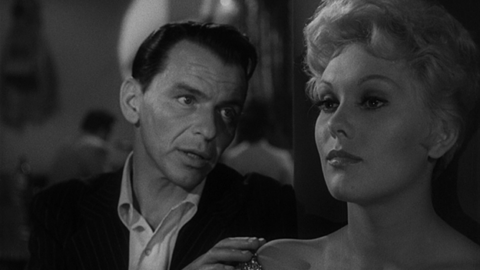TCM Diary: Ava Gardner x 2
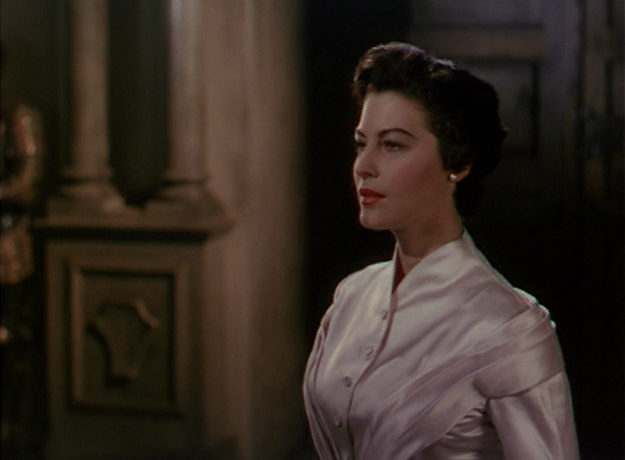
The Barefoot Contessa
The tagline for the 1954 drama The Barefoot Contessa, starring Ava Gardner in the title role, was “The World’s Most Beautiful Animal!” Beauty is as beauty does—it did quite a lot for Gardner, and quite a lot to her—but there’s something curiously deliberate in the choice of “animal,” beyond the ordinary press kit purple prose. It gestures at her feral nature, her untamable spirit. Gardner was arguably the earthiest of all the golden age stars, and her duality of coarseness and glamour made her one of the most compelling.
Though reportedly based on Rita Hayworth—the Spanish-American dancer who achieved Hollywood stardom and suspended her career to wed Prince Aly Khan—The Barefoot Contessa’s heroine Maria Vargas has a lot of Ava in her DNA as well. Like Gardner, she grew up with her toes in the soil and her head in the clouds. Neither actively pursued a film career, but both seized the chance to leave poverty behind. Both were chosen for their exquisite beauty without a thought to their talent: Maria’s mentor assures her, “If you can act, I can help you; if you can’t, nobody can teach you.” Gardner’s screen test, arranging flowers in silence because her Southern accent was indecipherable, inspired Louis B. Mayer to wire, “She can’t sing, she can’t act, she can’t talk; she’s terrific!”
The Barefoot Contessa was written and directed by Joseph L. Mankiewicz, and like his successive Oscar winners A Letter to Three Wives and All About Eve, it’s narrated by a cynical trio summoned by a common acquaintance—in the jargon of their milieu, and with frequent contradictions. (Mankiewicz deserves far more credit as forerunner and practitioner of the Rashomon device.) Harry Dawes (an understated Humphrey Bogart) is the philosophical filmmaker who guides Maria to stardom, Oscar Muldoon (sensationally smarmy Edmond O’Brien) is the sweat-drenched publicist who makes her an idol, and Vincenzo Torlato-Favrini (dashing Rossano Brazzi) is the old-world Italian count who offers her marriage and the life she always craved. Of the three, only Harry sees the frightened country girl beneath the layers of fantasy; they develop a warm, platonic friendship, and Mankiewicz can be forgiven for making his most compassionate, wise, and urbane character a writer/director by profession.
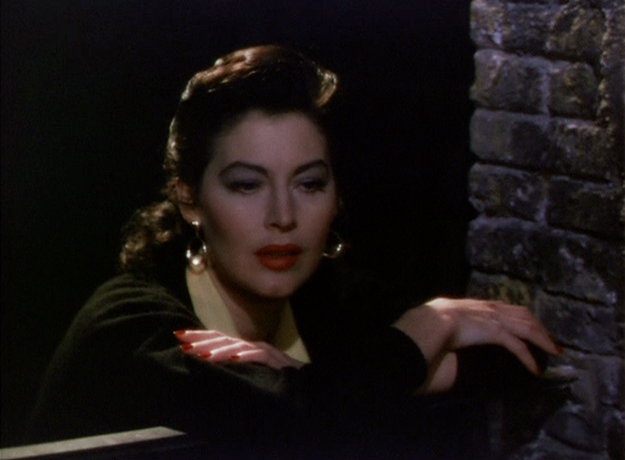
The Barefoot Contessa
What’s less forgivable is the tortured Cinderella metaphor that sinks his otherwise bristling screenplay. Shoes are a despised symbol of domestication and ownership to Maria, and when her name is changed by the studio (an indignity Gardner refused) and her clique grows to include actual royalty, she fears becoming a possession. “Maybe we’re carrying this fairy tale nonsense too far,” observes Harry, and indeed the collision of myths and reality vis-à-vis the fantasy factory of Hollywood is pushed into ponderousness. Gardner gets the worst of it; emotionally opaque by design (Oscar declares her unreadable), Maria lacks the biting wit of her ironic apostles, consigned to suffer as they crack wise, to personify unattainable beauty and immeasurable longing while they attain all the measurable laughs.
Almost any other actress would play her as a symbol, but Gardner—who’d already lent flesh and blood to a literally monolithic ideal of love in One Touch of Venus—digs deep into her own journey from sharecroppers’ daughter to thrice-divorced Hollywood icon, knowing too well the dangers of belonging and the heartbreak of isolation. “The moon is your key light,” Harry assures Maria, and Gardner, too, mastered the intangibles of stardom. The ways and means of contentment are another matter entirely.
“I guess there’s all sorts of hunger in the world,” Gardner tells Clark Gable in Mogambo, when the big game hunter suggests that a nearby lion is roaring for his mate, not his dinner. Hunger is again the primary theme, but John Ford’s 1953 blockbuster adventure is too concerned with bestial instincts to force any unwieldy metaphors. It’s also one of the star’s few roles (at least until John Huston handed her the succulent plum of Maxine in The Night of the Iguana) to capitalize on her flair for comedy. A remake of Victor Fleming’s Red Dust with Gable reprising his role from 1932, Mogambo finds Gardner stepping in for Jean Harlow and revealing that, had she been given the chance to work with directors like Fleming, Hawks, or Ford ever again, she could have flourished in just their sort of two-fisted comic romances.
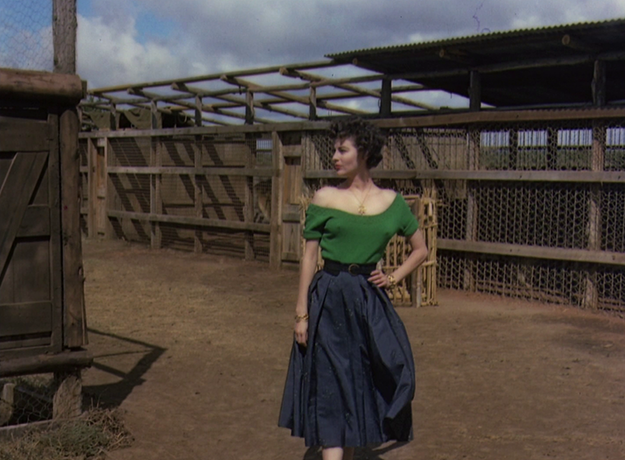
Mogambo
Stranded at an African outpost run by Victor Marswell (Gable), Gardner’s Eloise “Honey Bear” Kelly bickers with the rough-hewn safari leader before falling into his arms. The arrival of naturalist Donald Nordley (Donald Sinden) and his sheltered wife Linda (Grace Kelly) foils their affair, and when Marswell agrees to guide the Nordleys into gorilla country, Kelly is forced to watch as he pursues the alluring Linda under Donald’s oblivious nose.
From her introductory scene in an outdoor shower, Gardner’s Kelly always has a cutting remark or innuendo on the tip of her tart tongue (“Everything snarls around this joint,” she snaps when Marswell and the animals greet her with comparable rancor). But her jibes belie a profound understanding of human nature—she detects Marswell’s feelings for Linda the moment she arrives, and knows exactly where things are headed. (For his part, he shows none of her insight when he claims she “hasn’t got an honest feeling from her kneecap to her neck.” Whatever else she may be, she’s honest.) The only other person on safari with something of her acumen is Brownie (Philip Stainton), the avuncular second-in-command, who tells her his scars came from a rampaging buffalo and wonders how she acquired hers: “They’re not visible, but they’re there.”
Gardner’s verbal patter is augmented with sighs, giggles, and punctuating hmmms that rhetorically invite the assent of whomever she’s just ridiculed. She may have been educated at the York Club, but she knows how to be entertaining, and even amuses herself with improvised dances and frolics with the baby animals—irking Marswell, which amuses her all the more. The contrast with her humorless Maria Vargas is startling, but when she finally does reveal the source of her scars and the depth of her pain at having been discarded, the result is some of her finest dramatic work. She understands this lovelorn, self-protecting character inside out, and she uses words like spears, just as she did in real life. About Ford she wrote: “The meanest man on earth. Thoroughly evil. Adored him!”
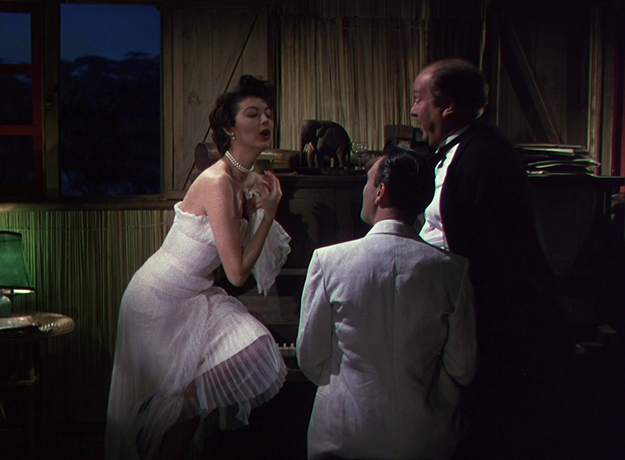
Mogambo
He came to adore her as well, but was initially hostile because MGM forced her casting over his favorite actress, Maureen O’Hara. For once the studio brass was right: the radiant redhead lacked Gardner’s plainspoken sultriness, and would not have contrasted as starkly with Grace Kelly, whose ice-to-fire ratio here is higher than usual. Gable’s chemistry with both leading ladies makes for the most robust and engaged of his ’50s performances, even if he’s inexplicably forced to spend most of the runtime repudiating Gardner. (The only viable explanation is the most troubling one: that the huntsman has made his conquest and now seeks fresh game.)
But it’s Ava’s show, and interest flags whenever she’s off screen—even the mountain gorillas are no match for her star quality (and the role secured her only Oscar nomination). Filmed on location in Kenya, Uganda, and other parts of central Africa, the film sports no orchestral score—only tribal chants and a few choruses from Gardner at a player piano. No score is needed, when dialogue issues forth from her like sweet music.
Mogambo airs February 17 on Turner Classic Movies; The Barefoot Contessa aired February 2.
Steven Mears received his MA in film from Columbia University, where he wrote a thesis on depictions of old age in American cinema.



